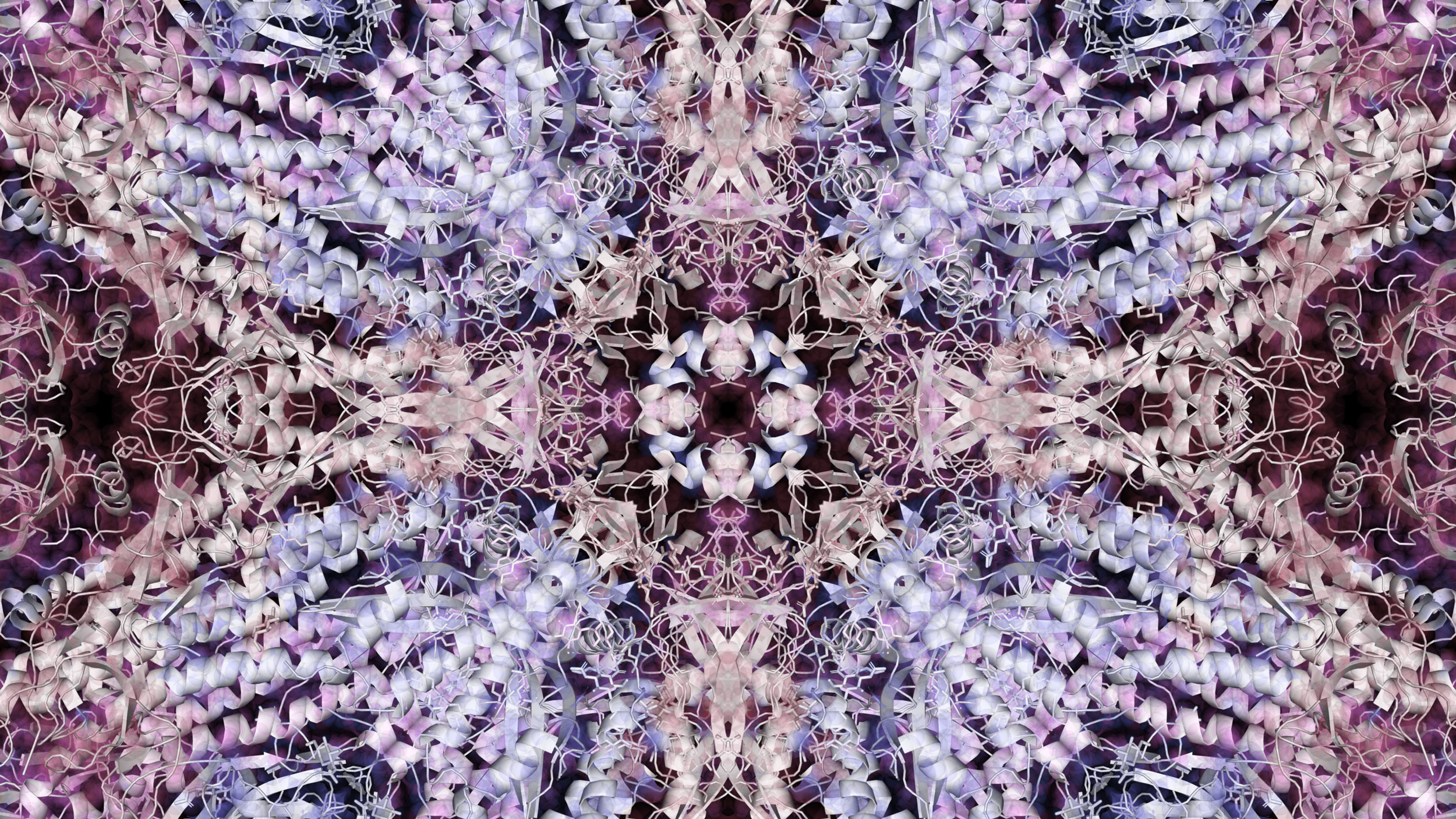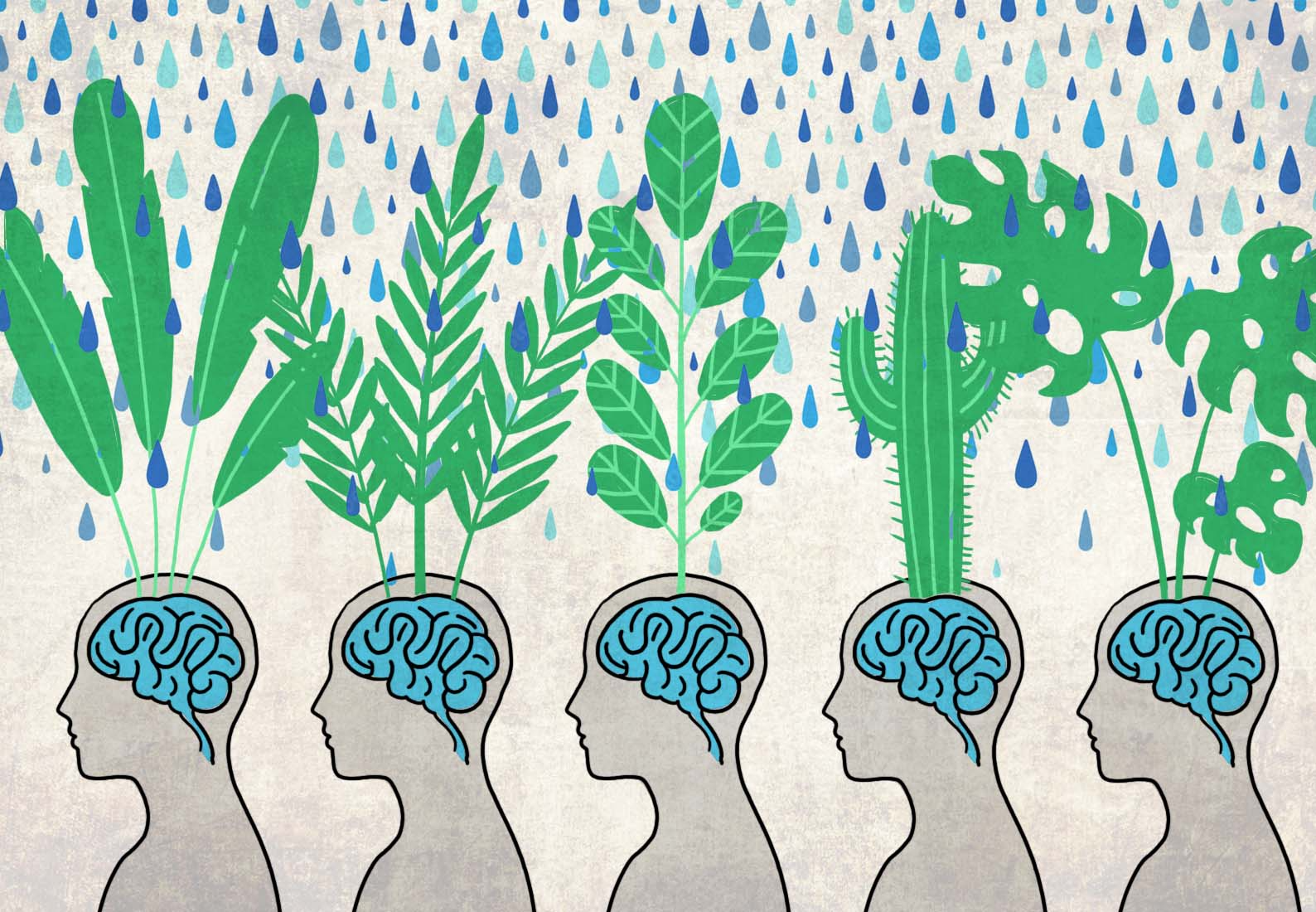Brooklyn-based artist Laura Splan is taking art and science to the next level – she is turning molecular images and animations into beautiful works of art.
A transdisciplinary artist with a focus on biomedical visuals, Splan’s work has been exhibited at the Museum of Art & Design, The New York Hall of Science, Beall Center for Art + Technology, among others. Her most recent artworks center around molecular animations which she creates, in part, by leveraging Schrödinger’s PyMOL software, a molecular 3D visualization system to view, share and analyze molecular data.
With two exhibitions of her molecular animations coming up in June 2022 – at Currents New Media Art Festival in Sante Fe, New Mexico, and International Symposium on Electronic Art in Barcelona, Spain – we sat down with Splan to discuss her work, how she got started, and what she hopes her art conveys to the larger community.
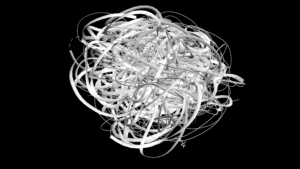
Syndemic Sublime Llama Alpaca Human SARS Cov-2
What led you to start using PyMOL for your artworks?
In 2018, I was invited to do a three-month bioart residency at the Science Center in Philadelphia. It was hosted by Integral Molecular, a biotech company that specializes in antibody discovery. While there, I was introduced to the PyMOL software by one of their scientists who was using it for research. At that point, I had already done a great deal of work with digital media and creative technology, so the PyMOL software was an intriguing entry point for me to better understand the science behind molecular biology.
I started tinkering with the software and looking for unconventional ways to use it in my creative process. The sculpting feature in PyMOL led me down a path of making generative molecular animations. I would coax the software into creating molecular movements of its own and record those interactions to make animations. My initial animations were focused on antibody structures. I was particularly interested in the use of non-human antibodies for the production and engineering of vaccines and antiviral treatments. The first animation that I made was created with an alpaca nanobody in complex with a ricin toxin.
I like to think of my work as creating liminal experiences using the intersections of art and science to reframe our relationship to each.
How did your work evolve from that initial experience?
My exhibition after my residency not only included these molecular animations, but also included sculptures made with fiber from llamas that had actually produced antibodies for scientific research. I was really interested in the contrast between the virtual space of molecular visualization software and the tactile physicality of the llama fiber. I have continued to create these kinds of contrasts in my more recent work.
You expanded into SARS-CoV-2 visualizations in 2020 – can you share a little about that project?
While sheltering-in-place in early 2020, I began a remote animation collaboration with Integral Molecular. In our initial conversations, we discussed their SARS-CoV-2 research and conformational changes of the spike protein. That’s when I had the idea to leverage the PyMOL morphing feature to animate the folding and folding of the coronavirus spike protein structure for a series of large-scale kaleidoscope animations.
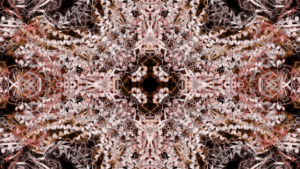
Unraveling – Orange Salmon Oxygen
I was also really struck by the palette of colors in PyMOL – many of the colors were named for idealized notions of nature, like raspberry and sky blue. It was interesting to see how these idealized notions of nature are embedded in software that is used to depict and engineer nature. I loved that connection and carried it through in my work, where I ended up colorizing structures in PyMOL using only colors with nature-related naming conventions.
Shortly after I finished that animation series, BioBAT Art Space at the Brooklyn Army Terminal invited me to display this work in an immersive installation that was open from August 2020 to March 2021.
What was the reception to that work and what was the larger intention behind it?
BioBAT Art Space is a 15,000 square-foot gallery. For my exhibition, I was able to have timed viewings, which allowed viewers to have a more personal and intimate experience with the work. I wanted people to navigate the installation on their own terms.
The installation also had a soundscape that accompanied the animations, and many people commented that it was very meditative – it had a therapeutic quality for them. The electric guitar soundscape was created by biotech lab technician Frank Masciocchi and riffs on the genetic sequence of the coronavirus as musical notes. Some said it felt like an “electric womb”, not fully human. There was a simultaneous comfort and strangeness present throughout the installation.
Ultimately, you could focus on the SARS-CoV-2 structures or you could simply enjoy the soothing tempo of the sounds and animations or you could appreciate a combination of the two: beautiful molecular structures that stem from a deadly virus. It offered a contrast between comfort and discomfort.
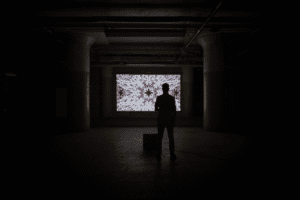
Unraveling – Installation View at BioBAT Art Space
When you think about the complicated way we have been living for the last two years, beauty and pleasure can be useful modes of engagement to start more challenging conversations. I like to think of my work as creating liminal experiences using the intersections of art and science to reframe our relationship to each.
What is next on the horizon for you?
I recently created a series of data-driven animations using PyMOL that explore interspecies entanglements in our contemporary biomedical reality. They entangle both human and non-human protein structures as they are disrupted and unraveled over time with data representing deaths from COVID in the U.S. The animations start out as conventional-looking structures and are slowly unraveled, unfolded, and tangled as the data disrupts their conformations. They are quite mesmerizing. The two upcoming exhibitions in Sante Fe and Barcelona will include these animations. The work has been very well received, and it’s been exciting to have opportunities to show these animations in so many different contexts and to create a space for people to consider entanglements between natural and constructed worlds.
I’ll be discussing my interdisciplinary process and collaborations with scientists at an upcoming public event at the Simons Foundation, “THE STICKY SPACE BETWEEN ART AND SCIENCE“, on May 20, 2022 in New York City. Would love to see some PyMOL users in the audience!
